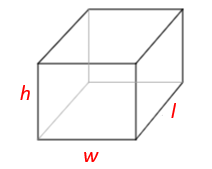
In Indus Valley Civilisation (about 300 B.C.), the bricks used for construction work were having dimensions in the ratio
A. 1:3:4
B. 4:2:1
C. 4:4:1
D. 4:3:2
Answer
590.1k+ views
Hint- The Indus Valley Culture (IVC), often denoted by its major city Harappa, spanned almost two millennia from 3200 to 1300 BC. Its tradition reaches back to approx. 6800 BC: a 4000-year long expansion of villages and towns, of trading activity, and of technological advancements culminates between 2600 and 1900 BC in the built-up of large brick-built cities.
Complete step by step solution:
In Indus Valley Civilisation the dimensions of the bricks were in the ratio
length:breadth:thickness=4:2:1.
Later, the ratio changed in Harappan Civilisation.
Basic structure of bricks used In Indus Valley Civilisation (about 300 B.C.)

Bricks having structure similar to the cuboid.
And as we know,
Cuboid has six faces; thus, we say bricks having also 6 faces as shown in figure.
Volume of brick (Cuboid) = l$ \times $h$ \times $w
Area of the base = l$ \times $w
Area of the total surface =2(lw+lh+hw)
The Indus Valley is traversed by the Indus and Saraswathi Rivers, covering 1.6 million square kilometers. As a result of many archaeological ‘finds,’ this one was accidental, in addition to unusual: the find was an entire civilization.
Therefore, Option (B) is the correct answer.
Note- Today, the Harappa site is a UNESCO World Heritage Centre. The area was the domain of India at the time of the discovery; Therefore, it was part of the British Raj. during the initial discovery period. while, after India was partitioned, this terrain was split between Pakistan and India.
Complete step by step solution:
In Indus Valley Civilisation the dimensions of the bricks were in the ratio
length:breadth:thickness=4:2:1.
Later, the ratio changed in Harappan Civilisation.
Basic structure of bricks used In Indus Valley Civilisation (about 300 B.C.)

Bricks having structure similar to the cuboid.
And as we know,
Cuboid has six faces; thus, we say bricks having also 6 faces as shown in figure.
Volume of brick (Cuboid) = l$ \times $h$ \times $w
Area of the base = l$ \times $w
Area of the total surface =2(lw+lh+hw)
The Indus Valley is traversed by the Indus and Saraswathi Rivers, covering 1.6 million square kilometers. As a result of many archaeological ‘finds,’ this one was accidental, in addition to unusual: the find was an entire civilization.
Therefore, Option (B) is the correct answer.
Note- Today, the Harappa site is a UNESCO World Heritage Centre. The area was the domain of India at the time of the discovery; Therefore, it was part of the British Raj. during the initial discovery period. while, after India was partitioned, this terrain was split between Pakistan and India.
Recently Updated Pages
Master Class 11 Accountancy: Engaging Questions & Answers for Success

Master Class 11 Science: Engaging Questions & Answers for Success

Master Class 11 Business Studies: Engaging Questions & Answers for Success

Master Class 11 English: Engaging Questions & Answers for Success

Master Class 11 Computer Science: Engaging Questions & Answers for Success

Master Class 9 General Knowledge: Engaging Questions & Answers for Success

Trending doubts
Why is there a time difference of about 5 hours between class 10 social science CBSE

What is the median of the first 10 natural numbers class 10 maths CBSE

The Equation xxx + 2 is Satisfied when x is Equal to Class 10 Maths

Write a letter to the principal requesting him to grant class 10 english CBSE

A Paragraph on Pollution in about 100-150 Words

What are luminous and Non luminous objects class 10 physics CBSE




